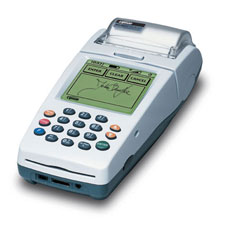Ebay and Paypal now seem like they were a match made in heaven. Paypal and Ebay started out as two different companies. Both Ebay and Paypal have grown very rapidly. After both Ebay and Paypal became well established, Ebay saw huge potential in Paypal and several other smaller 3rd party processing companies. Ebay did what any other corporate monster would do. They bought all of them.
Even though Ebay and Paypal work seamlessly together and Paypal is widely accepted, it is important for Ebay sellers to look at accepting other payment methods for their Ebay sales.
Why?…
I have done a significant amount of research in my selling on Ebay. I have three Ebay accounts, one personal and two business, all three are power seller accounts. In my experience, if you accept ‘only Paypal’ on Ebay, you are loosing between 20% and 30% of your potential customers from Ebay. If you sell primarily business to business, you are probably loosing a lot more than that.
Paypal is notorious for some of the worst customer service and poorest user experience of any online service, ever…
There is a huge population of people who absolutely refuse to use Paypal, under any circumstance. There is no middle line. Whether these people have gotten ripped off through Paypal, had their account held, or just don’t like Paypal, is irrelevant. The fact is that these people may want to buy from you, and while you may have the best prices or best service ever, you cant have their business.
My personal belief in business, is that making the buying process for your customers easy and trouble free, is absolutely key to gaining new and keeping current customers. This extends into online sales and any other channel of sales and marketing that your company uses.
Give customers another option for payment:
Accepting credit cards is the best alternative to Paypal for Ebay sellers. Checks are also a good fit, but only if a business is able to accept the checks electronically over the phone or online. Cash is the least convenient method of paying online, and I wouldn’t even consider it as widely used on Ebay. Mailing in checks or money orders is time consuming, and offers very little protection from fraud. From time to time I still see sellers that only accept checks or money orders by mail, and I personally will not buy from them. If you only accept payment by mail, I pretty much guarantee that you will see a jump in sales if you switch to electronic payment. Apart from this, many people don’t factor in the time it takes to go to the bank, make a deposit, wait for it to clear, hope it clears for checks. Time is the most valuable resource, and I know that everyone has better things to do than go to the bank, especially for business owners.
Even if you need to have your Ebay customers call when they want to pay with a credit card or check, you are still providing your customers with the method of payment that they chose. Whether you believe the customer is always right or not, it is un-arguable that customers make business possible. Make your customers happy by giving them the options that they want, and they will reward you for it.
There are of course integrated solutions that will allow your website to integrate your Ebay sales into it, and 3rd party checkout systems. While these systems are often very high quality, this often comes at a price that is too high for smaller Ebay sellers. For this reason, accepting Ebay payments over the phone is one of the cheapest and easiest methods available.
Paypal is so much cheaper:
Paypal is cheaper only when a business does an enormous volume of transactions. Otherwise, the fees for Paypal and the fees for a merchant account are very similar. Accepting checks electronically is normally cheaper than credit cards, and therefor cheaper than Paypal as well.
Paypal also does their best to remove customer and business owner’s rights when a disagreement does happen. Merchants on Paypal often have their accounts frozen for high sales volumes, and both sellers and buyers often lose as a result of fraud. This is another of the numerous reason why people dislike Paypal.
Conclusion:
20% – 30% seems like a lot to me. That could easily be the difference between a successful business and a failure. These numbers may not prove exact for every person that sells on Ebay because of the vast difference in buyer trends with each type of product, but having tested loosing 20% of business when credit cards are not an option is enough proof for myself.

 Credit cards were first used in the 1920’s in the United States where individual companies such as oil firms and hotel chains began issuing them to their customers. These cards were proprietary, and were more similar to what we would now call a loyalty card. The great depression, followed by world war two, created an enormous setback in the advancement of the credit card industry. This industry did pick back up when the country was back in a more stable condition at the end of world war two.
Credit cards were first used in the 1920’s in the United States where individual companies such as oil firms and hotel chains began issuing them to their customers. These cards were proprietary, and were more similar to what we would now call a loyalty card. The great depression, followed by world war two, created an enormous setback in the advancement of the credit card industry. This industry did pick back up when the country was back in a more stable condition at the end of world war two. In 1958, Bank of America and American Express both issued credit cards. These credit cards, The American Express Card, and the BankAmericard were the first bank issued cards, and their success was apparent almost overnight. In 1966, Bank of America allowed licensing of the BankAmericard card to help spread the BankAmericard, and settle and collect on a widespread basis. BankAmericard was later changed to the Visa card to separate the name Bank of America from the name of the card.
In 1958, Bank of America and American Express both issued credit cards. These credit cards, The American Express Card, and the BankAmericard were the first bank issued cards, and their success was apparent almost overnight. In 1966, Bank of America allowed licensing of the BankAmericard card to help spread the BankAmericard, and settle and collect on a widespread basis. BankAmericard was later changed to the Visa card to separate the name Bank of America from the name of the card. Also in 1966, fourteen US banks formed an alliance called Interlink which enabled the ability to exchange information on credit card transactions. BankAmericard had virtually an exclusive market share until 1967. In 1967, MasterCharge, now known as MasterCard was a created as a collaboration in response to the success the BankAmericard. MasterCharge was made by 4 California banks, called the Western States BankCard Association.
Also in 1966, fourteen US banks formed an alliance called Interlink which enabled the ability to exchange information on credit card transactions. BankAmericard had virtually an exclusive market share until 1967. In 1967, MasterCharge, now known as MasterCard was a created as a collaboration in response to the success the BankAmericard. MasterCharge was made by 4 California banks, called the Western States BankCard Association. Manual Imprinters have been around since the beginning of a wide acceptance of credit cards. They are still as widely used and are considered a great backup processing method when a businesses primary method is unavailable. Originally, merchants would imprint their customers cards and then mail their slips into their bank. This process was time consuming and did not offer the speed or instant transfer capabilities that are standard today. Using a manual imprinter now, merchants can call in transactions for instant approval. The transactions are now electronically deposited into a businesses bank account.
Manual Imprinters have been around since the beginning of a wide acceptance of credit cards. They are still as widely used and are considered a great backup processing method when a businesses primary method is unavailable. Originally, merchants would imprint their customers cards and then mail their slips into their bank. This process was time consuming and did not offer the speed or instant transfer capabilities that are standard today. Using a manual imprinter now, merchants can call in transactions for instant approval. The transactions are now electronically deposited into a businesses bank account. Verifone:
Verifone: Hypercom:
Hypercom: Lipman:
Lipman: The Future:
The Future:




